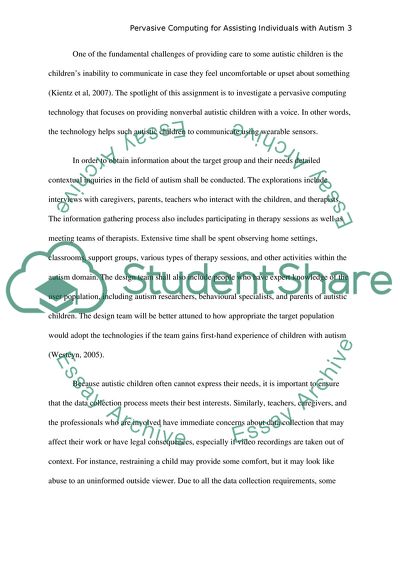Cite this document
(Pervasive Computing for Assisting Individuals With Autism Assignment Example | Topics and Well Written Essays - 1750 words, n.d.)
Pervasive Computing for Assisting Individuals With Autism Assignment Example | Topics and Well Written Essays - 1750 words. https://studentshare.org/information-technology/1820568-research-assignment-for-computer-science
Pervasive Computing for Assisting Individuals With Autism Assignment Example | Topics and Well Written Essays - 1750 words. https://studentshare.org/information-technology/1820568-research-assignment-for-computer-science
(Pervasive Computing for Assisting Individuals With Autism Assignment Example | Topics and Well Written Essays - 1750 Words)
Pervasive Computing for Assisting Individuals With Autism Assignment Example | Topics and Well Written Essays - 1750 Words. https://studentshare.org/information-technology/1820568-research-assignment-for-computer-science.
Pervasive Computing for Assisting Individuals With Autism Assignment Example | Topics and Well Written Essays - 1750 Words. https://studentshare.org/information-technology/1820568-research-assignment-for-computer-science.
“Pervasive Computing for Assisting Individuals With Autism Assignment Example | Topics and Well Written Essays - 1750 Words”. https://studentshare.org/information-technology/1820568-research-assignment-for-computer-science.


